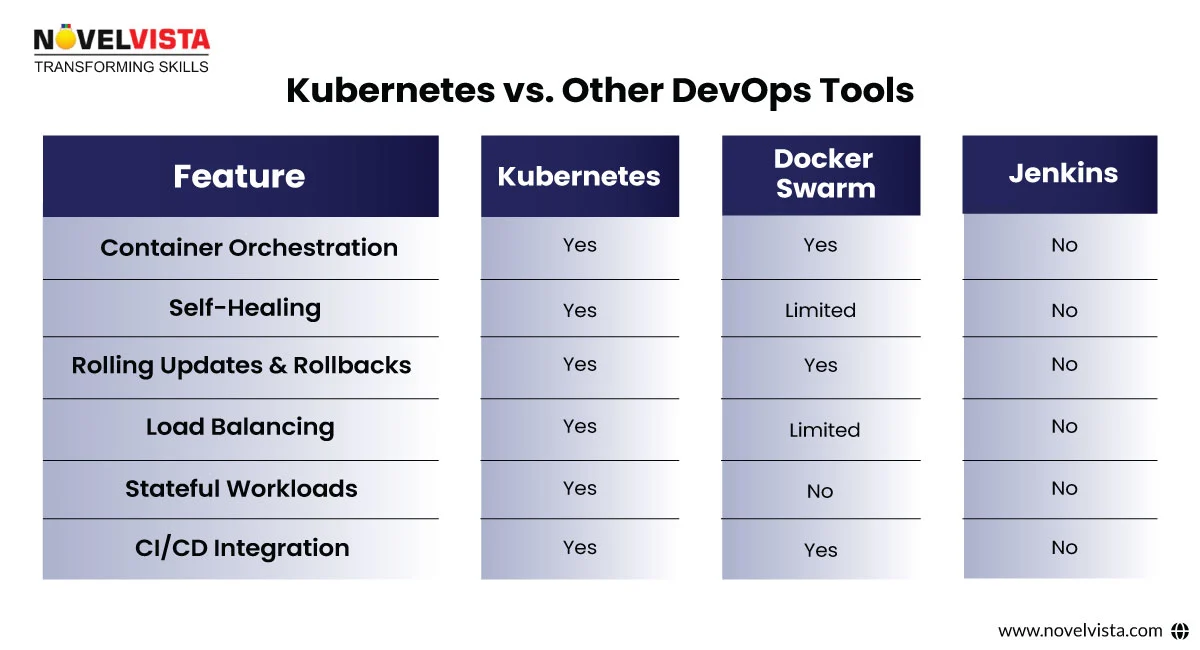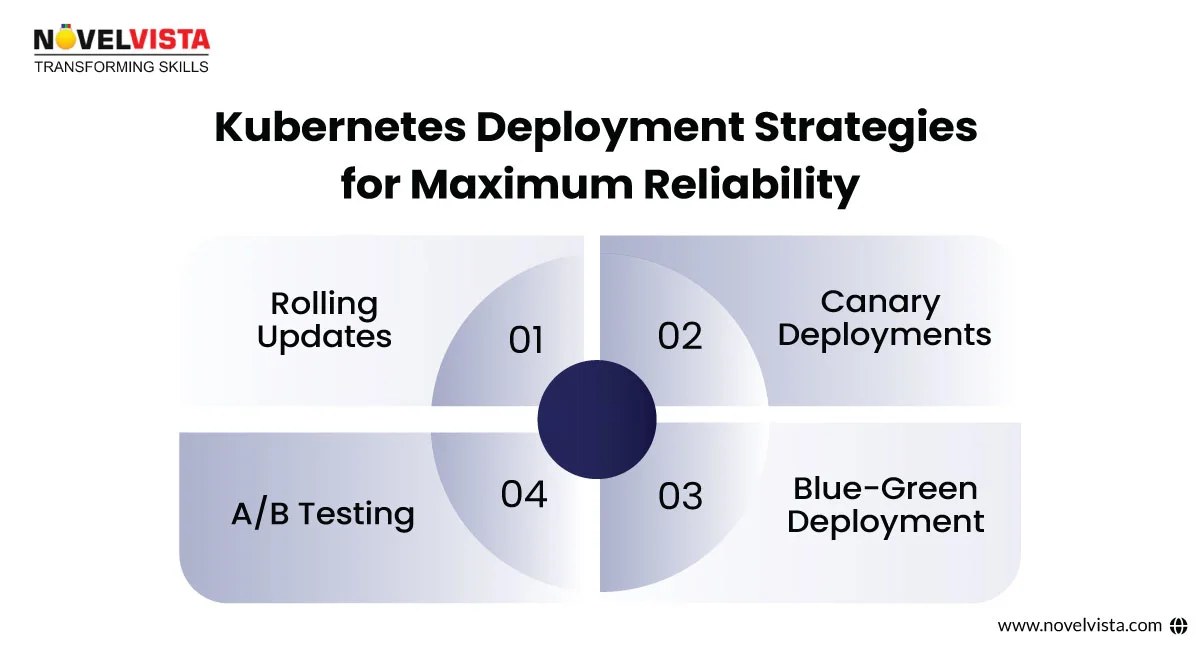Containerization is this trend that’s taking over the world to allow people to run all kinds of different applications in a variety of different environments. When they do that, they need an orchestration solution to keep track of all of those containers and schedule them and orchestrate them. Kubernetes is an increasingly popular way to do that. With the rise of Kubernetes, DevOps has gained more traction. While they may seem very different one is a tool and the other is a methodology they work together to help organizations deliver fast. This article explains why Kubernetes is essential to your DevOps strategy.
Google designed Kubernetes and then released it as an open-source to help alleviate the problems in DevOps processes. The aim was to help with automation, deployment, and agile methodologies for software integration and deployment. Kubernetes made it easier for developers to move from dev to production, making applications more portable and leverage orchestration. Developing in one platform and releasing quickly, through pipelines, to another platform showcased a level of portability that was previously difficult and cumbersome. This level of abstraction helped accelerate DevOps and application deployment.
DevOps is a set of practices that combinessoftware development(Dev) andIT operations(Ops). It aims to shorten thesystems development life cycleand providecontinuous deliverywith highsoftware quality. DevOps is complementary withAgile software development, several DevOps aspects came from the Agile methodology
From a technology point of view, DevOps typically focuses on CI/CD (continuous integration and continuous delivery or continuous deployment). Here is a quick explanation:
Continuous integration :
The source code gets modified several times, and these frequent changes happen on a weekly or a daily basis. Code integration, the next phase, is the core of the entire DevOps lifecycle. In continuous integration, new codes that support add-on functionalities are built and integrated into the existing code.
In this phase, bugs in the source code are detected early on. To generate new code that brings more functionalities to the application, developers run tools for unit testing, code review, integration testing, compilation, and packaging.
The continuous integration of this new code into the existing source code helps reflect the changes that end-users would experience with the updated code.
Jenkins is popularly used as a reliable DevOps tool for procuring the updated source code and constructing the build into.exe format. These transitions occur seamlessly, and the updated code is packaged and proceeded to the next phase, which is either the production server or the testing server.
Continuous deployment:
In this phase, the finalized application code is deployed to the production servers. Configuration Management is a key process in this phase, and it carries out the precise deployment of application code on all servers. Consistency in the application’s performance and functional conditions is established and curated. Code is released to the servers, updates are scheduled for all servers, and these configurations are kept consistent throughout the production process. Ansible, Puppet, and Chef are some of the effectiveDevOps toolsused for Configuration Management, where they frequently execute the quick and continuous deployment of new code.
Containerization tools are used to achieve continuous deployment through the Configuration Management process. Vagrant, a containerization tool, develops coherence in different environments - from development and testing to staging and production. Similarly, the scalability of continuous deployment is handled by tools like Docker. These tools nullify all sorts of production failures and system errors by replicating and packaging the software couplings from testing, staging, and development phases. Ultimately, the application runs smoothly on different computers.
With the rise of DevOps Kubernetes, businesses are gaining faster, more dependable software delivery. As containerized applications become the standard, an orchestration solution is needed to manage them efficiently. This is where Kubernetes orchestration comes in, automating the deployment, scaling, and management of applications across diverse environments.
Kubernetes allows organizations to run applications within containers in a distributed manner. It also handles scaling, resiliency and availability. Additionally, Kubernetes provides:
Before having a look at its benefits, here’s a list of some key terms of important Kubernetes management tools:
Pod – A small, usable unit in Kubernetes that runs one or more containers.
Node – A physical or virtual machine running pods.
Kubernetes Clusters – A group of points that work together to manage containerized applications.
Deployment – The process of making clear how an application should be managed.
Service – Exposes a set of pods as a network service within Kubernetes.
ConfigMap & Secret – Store setup data and sensitive information safely.
StatefulSet – Manages memory-based applications requiring continuous storage.
After learning the basics, let's understand how Kubernetes execution fits into DevOps automation.
The wide array of features and support provided by the Kubernetes platform are likely to have many benefits in a company’s DevOps processes, but there are some less obvious benefits that may affect teams and companies on a larger scale. Kubernetes supports CI/CD pipeline management, making it easier to deliver software quickly and with no downtime. The efficiency of rolling updates, combined with the configuration options that Kubernetes provides, allows DevOps teams to deliver stable software quickly, but according to Dr.Forsgren’sAccelerate,continuous delivery practices and processes have other ancillary benefits that may not be immediately noticeable. Dr.Forsgren claims that the impact of a continuous delivery pipeline can be seen as higher quality software in each delivery, the improvement of company culture as a whole, and the reduction of the cost of poor quality by minimizing the amount of time spent on fixes and rework. In other words, using tools like Kubernetes to successfully implement continuous delivery practices will, in turn, improve employee morale by preventing “big bang” releases, and the minimal size of each daily release ensures that fixes can be rolled out quicker, thus improving the overall quality of the final product.
Deploy Everywhere.
As noted previously, Kubernetes handles the ability to deploy an application anywhere without having to worry about the underlying infrastructure. This abstraction layer is one of the biggest advantages to running containers. Wherever deployed, the container will run the same within Kubernetes.
Infrastructure and Configuration as Code.
Everything within Kubernetes is “as-code,” ensuring that both the infrastructure layer and the application are all declarative, portable and stored in a source repository. By running “as-code,” the environment is automatically maintained and controlled.
Hybrid.
Kubernetes can run anywhere – whether on-premises, in the cloud, on the edge. It’s your choice. So, you’re not locked in to either an on-premises deployment or a cloud-managed deployment. You can have it all.
Open Standards.
Kubernetes follows open-source standards, which increases your flexibility to leverage an ever-growing ecosystem of innovative services, tools and products.
Deployments with No Downtime.
Since applications and services get continuously deployed during the day, Kubernetes leverages different deployment strategies. This reduces the impact on existing users while giving developers the ability to test in production (phased approach or blue-green deployments). Kubernetes also has a rollback capability – should that be necessary.
Immutability.
This is one of the key characteristics of Kubernetes. The oft-used analogy, “cattle, not pets,” means that containers can (and should) be able to be stopped, redeployed, and restarted on the fly with minimal impact (naturally, there will be an impact on the service the container is operating).

1. Container Orchestration
2. Self-Healing
3. Rolling Updates and Rollbacks
4. Load Balancing
5. Stateful Workloads
6. CI/CD Integration
Kubernetes stands out due to its advanced orchestration capabilities, making it the go-to choice for DevOps and application deployment .
Kubernetes smoothly combines with various DevOps tools, ensuring automation at every stage:
GitOps – Uses Git repositories to manage Kubernetes configurations via tools like ArgoCD and Flux.
Infrastructure as Code (IaC) – Works with Terraform and Helm to automate infrastructure provisioning.
CI/CD Pipelines – Connects with Jenkins, GitHub Actions, and GitLab CI/CD for automated executions.
This integration boosts software delivery and makes sure stability in production.
1.Automated CI/CD Pipelines
2. Microservices Architecture
3. Hybrid & Multi-Cloud Deployments

To ensure seamless Kubernetes deployment, organizations implement various strategies:
1. Rolling Updates
2. Canary Deployments
3. Blue-Green Deployments
4. A/B Testing
These methods help DevOps teams install changes safely while reducing risk.
Kubernetes makes sure applications can scale dynamically based on demand:
Horizontal Pod Autoscaler (HPA) – Adjusts the number of pods based on CPU/memory usage.
Vertical Pod Autoscaler (VPA) – Appoint more resources to containers when needed.
Cluster Autoscaler – Adds or removes worker units dynamically.
These functions make Kubernetes cost-effective and highly expandable, perfect for large-scale applications.
Automates container management, minimizing human effort.
Enhances CI/CD, making sure faster and safer executions.
Deploys anywhere, enabling cloud, on-prem, or hybrid environments.
Improves dependability with zero-downtime updates.
Assures adaptability, operating resource usage based on demand.
By using DevOps Kubernetes , businesses automate development, improve durability, and increase applications effectively. If your DevOps strategy doesn’t include Kubernetes yet, it’s time to embrace the future.
Explore Kubernetes and master DevOps today with NovelVista and DevOps Foundation Training & Certification .Gain the expertise to drive DevOps compliance in your organization.
Confused about our certifications?
Let Our Advisor Guide You